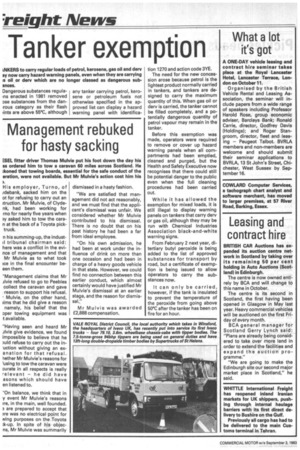'relight News
Page 12

If you've noticed an error in this article please click here to report it so we can fix it.
Tanker exemption
kNKERS to carry regular loads of petrol, kerosene, gas oil and dery ay now carry hazard warning panels, even when they are carrying is oil or dery which are no longer classed as dangerous subances.
Dangerous substances regulams enacted in 1981 removed DSO substances from the danrous category as their flash lints are above 55°C, although any tanker carrying petrol, kerosene or petroleum fuels not otherwise specified in the approved list can display a hazard warning panel with identifica
lion 1270 and action code 3YE.
The need for the new concession arose because petrol is the lightest product normally carried in tankers, and tankers are designed to carry the maximum quantity of this. When gas oil or dery is carried, the tanker cannot be filled completely, and a potentially dangerous quantity of petrol vapour may remain in the tanker.
Before this exemption was made, operators were required to remove or cover up hazard warning panels when all compartments had been emptied, cleaned and purged, but the Health and Safety Executive now recognises that there could still be potential danger to the public even when the full cleaning procedures had been carried out.
While it has allowed the exemption for mixed loads, it is still illegal to display warning panels on tankers that carry dery or gas oil, although they may be run with Chemical Industries Association black-and-white warning signs.
From February 2 next year, ditertiary butyl peroxide is being added to the list of approved substances for transport by road, but a certificate of exemption is being issued to allow operators to carry the substances now.
It can only be carried, however, if the tank is insulated to prevent the temperature of the peroxide from going above 50°C after the tanker has been on fire for an hour.
























































































































